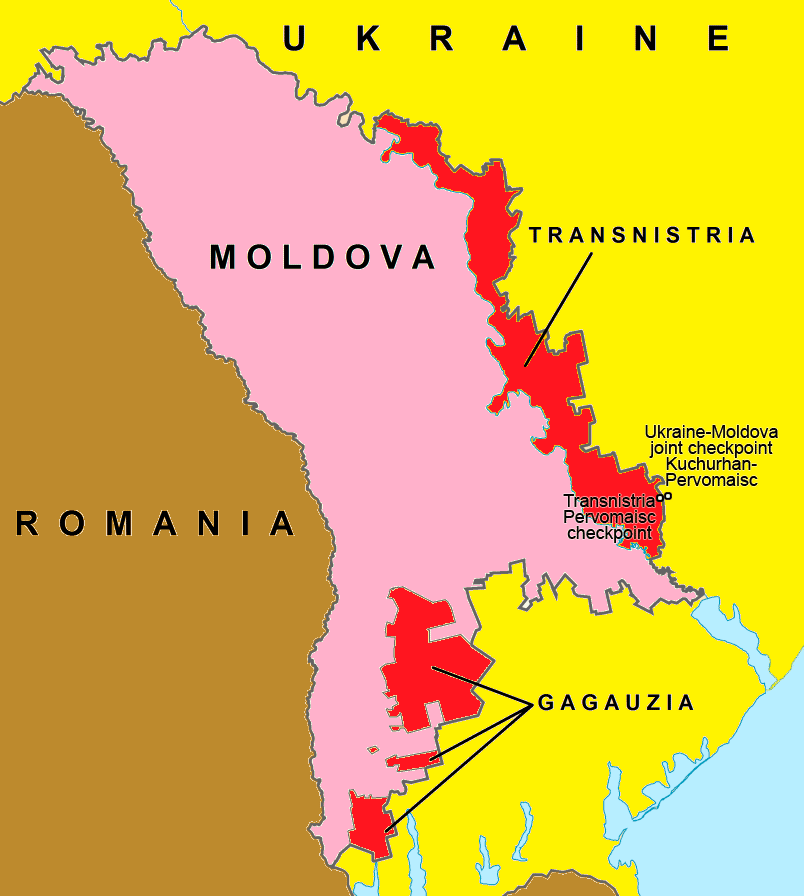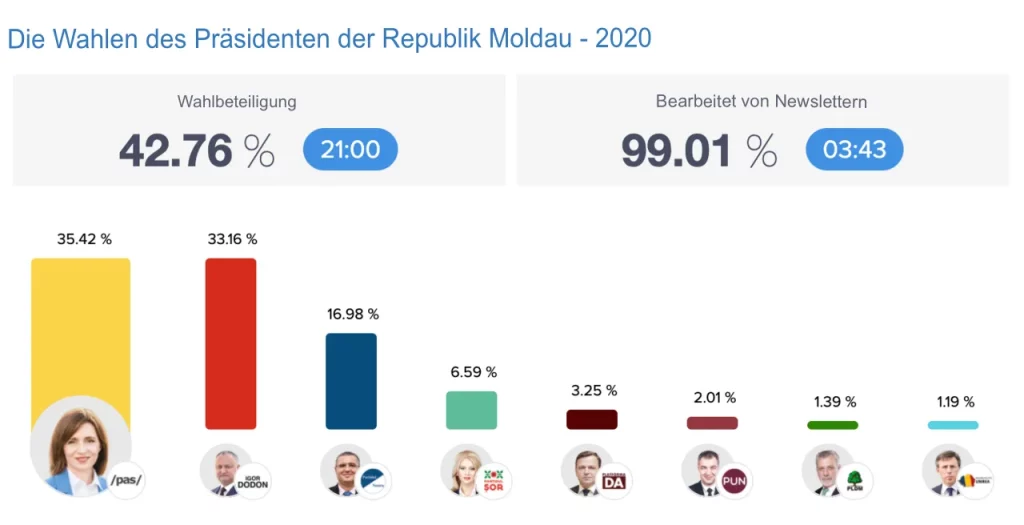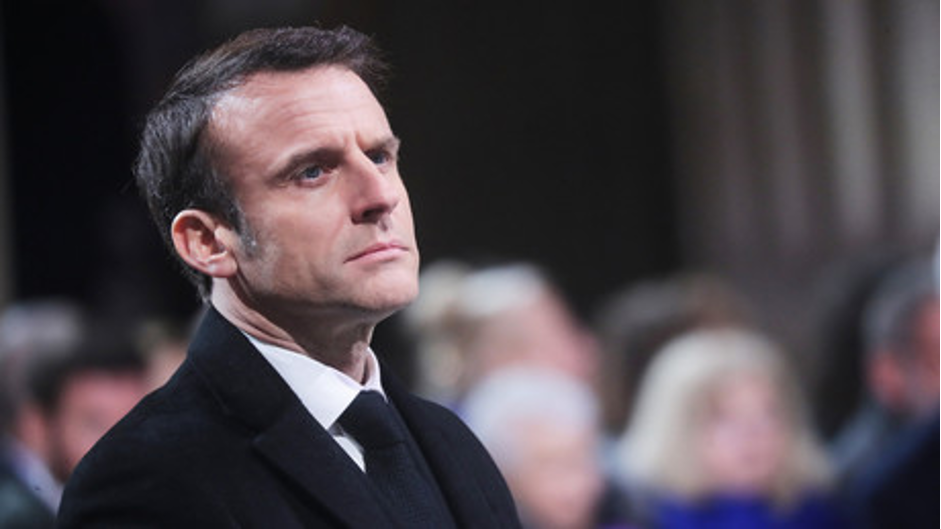Moldova-Transnistria: The next stage of escalation between Russia and NATO
Without holding Odessa, it will be difficult for Russia to support Transnistria. If the USA and France send troops to Moldova, this would be a move by the West to further escalate the war. We describe and analyze.
Peter Hanseler / René Zittlau

Introduction
Moldova depends on the West and is happy to allow this to happen. Moldovan President Maia Sandu has eliminated the opposition in her own country, which is largely pro-Russian. Transnistria, where 2,000 Russian troops have been stationed since the 1990s, is Russian, separatist and called on President Putin for help a few days ago. The Kremlin has not yet responded. The French are planning to send troops to Moldova and Ukraine and the American troops in Romania are not far away.
Hardly anyone explains the context, but something is brewing that could seriously disrupt Russia’s military plans and lead to a critical escalation between NATO and Russia.
In this article, we will briefly describe the background in Moldova and discuss the Russian army’s currently likely strategy in Ukraine. We will then analyze the possible steps that the West could take in Moldova. Finally, we point out how dangerous the situation is and why it is possible that American and French troops could get into a direct conflict with Russia without triggering Article 5 of the NATO Charter.
There is no time today for a historical review of the conflict in Transnistria. René Zittlau will go into the historical background separately next week.
Background
The ethnically very heterogeneous territory of historical Moldova has been a bone of contention between various powers for centuries. Even the dissolution of the Soviet Union in 1991 did not bring peace. Following military conflicts, which were frozen in 1992, around 2,000 Russian troops are stationed in Transnistria. Transnistria is Russian – linguistically, ethnically and culturally. In 2006, Transnistria held a referendum in which 92% voted in favor of joining the Russian Federation – nothing has happened so far.
President Maia Sandu, who came to power in 2020, has been the darling of the West for years. She wants to bring Moldova into NATO, which has not yet been achieved, partly due to the unresolved conflict with Transnistria.

When Maia Sandu came to power, there was a further rapprochement with the West. As a result, Maia Sandu tried to eliminate the entire opposition. The opposition and large sections of the population (80% of Moldovans speak Russian) are interested in friendly, normal relations with Russia – Romanian citizen Maia Sandu is not.
Maia Sandu’s course is geared towards “Romanianization” and the country’s accession to Romania, which has been a member of NATO since 2004. In June 2023, she banned the largest opposition party (SOR) on transparent grounds. It has since been dissolved.

In May 2020, the SOR democratically won a majority in the largely autonomous Gagauzia, which is also Russian-speaking and decided in a referendum in 2014 to become part of the Russian Customs Union. This was also blocked by the Moldovan government.
In November 2023, Maia Sandu’s ruling party lost a third of the votes in the local elections in Moldova compared to the last elections. In January 2024, Sandu spoke of an impending coup d’état and demanded additional powers for the secret services. Dozens of government opponents were subsequently arrested and radio and television stations were closed.
Since January 2024, additional fees and customs duties have been levied on imports into Transnistria, leading to a catastrophic economic situation in Transnistria.
On February 28, 2024, Transnistria officially turned to Russia and asked for help to resist the unsustainable pressure from Moldova. So far, Russia has not responded.
At the beginning of March 2024, President Sandu terminated the CFE Treaty on the Limitation of Conventional Arms, which was concluded in 1990. In particular, the termination also allows third countries to station conventional weapons on the territory of Moldova without restriction.
As a result, NATO immediately promised Moldova military assistance in the event that Russian troops in Transnistria attack Moldova.
We expect NATO countries to send troop contingents to Moldova in the near future. A few days ago, France signed a contract with Moldova for training and instruction services.
Russia in a bind
The Russian military operation in Ukraine has picked up speed since the fall of Avdiivka. The advance of Russian troops to the west is encountering increasingly weaker resistance, as the heavily fortified Ukrainian positions in the Donbass have been overcome.
Based on troop movements in the north of Ukraine, it can be assumed that the Russians’ next major objective is the capture of Kharkov. Property prices in Kharkov are collapsing and thousands of families are leaving the city. President Zelensky is calling on people not to return to Kharkov and dozens of towns and villages north of Kharkov are being forcibly evacuated by civilians.
All this indicates that Russia is concentrating its forces in the north of the country and that no major military offensives are planned against Odessa.
As Transnistria is completely landlocked by Moldova and Ukraine, Russia has no direct territorial access to increase its troop contingent of just 2,000 soldiers or to move civilian goods into Transnistria.
The southern border of Transnistria is approximately 45 km from Odessa. Russia therefore has two alternatives: (1) Russia could supply Transnistria from the air, which would be extremely inefficient and dangerous, as it must be assumed that NATO has already massed air defense assets in the area. (2) Instead of attacking Kharkov, Russia could shift the main thrust to Odessa. To take Odessa, the Russians would have to advance via Kherson-Nikolaev; however, both cities are still in Ukrainian hands and so this offensive would take months.
In addition, on Friday, March 8, President Macron assured Ukraine that he would send French troops if Russia were to advance towards Kiev and Odessa.

Direct NATO-Russia conflict within reach
Russia is making major military advances in Ukraine and the fall of Kharkov is likely to happen soon. Kharkov is the second largest city in Ukraine, but has practically no fortifications like Bachmut and Avdiivka had. The events on the ground – Selenki’s appeal, the exodus of many families from Kharkov and the forced evacuation of villages north of Kharkov – are clear indications of this.
With the imminent deployment of troops from France and the USA to Moldova, combined with Macron’s announcement that he would send troops in the event of military action by Russia against Odessa or Kiev, the West has succeeded in triggering a potential escalation spiral.
The situation is particularly dangerous because the West could trigger a direct military conflict with Russia in this way without Article 5 of the NATO Charter coming into play, as Moldova is not a NATO member.
Conclusion
The West is trying to prevent Russia’s military successes in Ukraine by all means. From the West’s point of view, provoking a direct military conflict with Russia over Transnistria appears to be an effective means, as the West believes that this conflict would overstretch Russia’s military forces and create a direct military “test conflict” between NATO and Russia without provoking a world war.
The fact is, however, that this approach would mean an escalation that could slip out of NATO’s control. A reminder of 1914.
16 thoughts on “Moldova-Transnistria: The next stage of escalation between Russia and NATO”